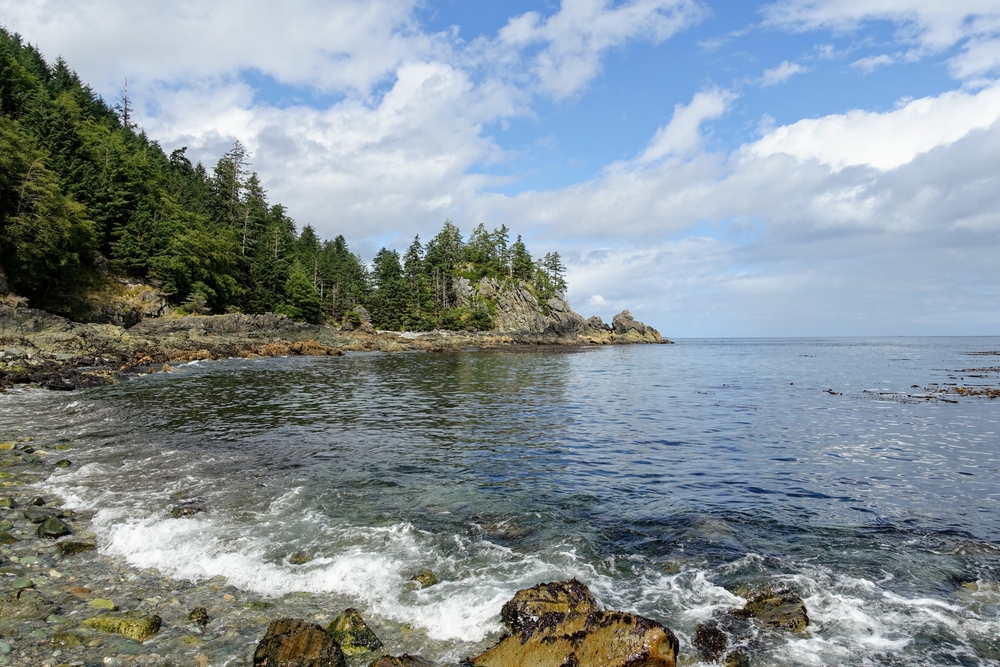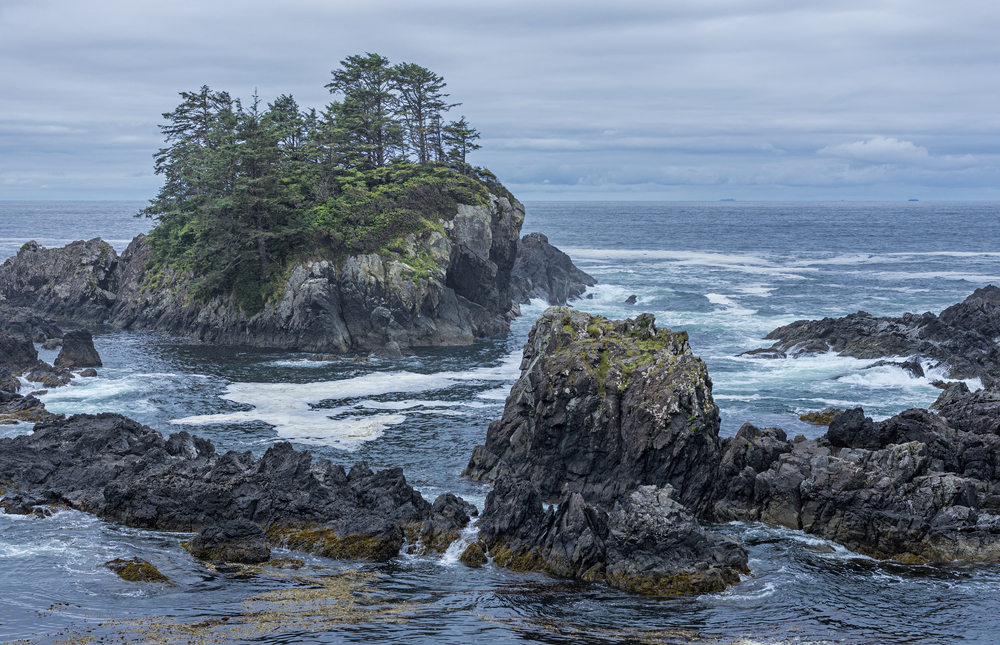Gwaii Haanas Overview
Gwaii Haanas National Park Reserve, National Marine Conservation Area Reserve, and Haida Heritage Site is a remote and breathtaking protected area located in the southern part of Haida Gwaii, an archipelago off the northern coast of British Columbia, Canada.
Known as “Gwaii Haanas,” which means “Islands of Beauty” in the Haida language, the park spans approximately 580 square miles (1,500 square kilometers) of rugged land and includes an additional 1,900 square miles (5,000 square kilometers) of marine conservation area. This unique designation reflects the deep cultural and ecological significance of the region, which is managed through a cooperative agreement between the Government of Canada and the Haida Nation.
The park’s terrain is a diverse mix of dramatic coastlines, lush temperate rainforests, and remote alpine regions. Towering western red cedar and Sitka spruce dominate the landscape, providing an essential habitat for the rich biodiversity of the region. The rugged mountains, including Mount Moresby, rise from the misty forests, while deep fjords and inlets carve through the islands.
The coastline is lined with rocky shores, intertidal zones, and secluded beaches, making it a haven for marine life and migratory birds. Among the most striking features are the ancient totem poles and longhouse remains of Haida villages, particularly at SG̱ang Gwaay (Ninstints), a UNESCO World Heritage Site, which stands as a testament to the deep cultural history of the Haida people.
Wildlife thrives in Gwaii Haanas, both on land and in the surrounding waters. The islands are home to unique subspecies, including the Haida Gwaii black bear, one of the largest black bears in North America due to its genetic distinction. The archipelago is also a critical habitat for seabirds, with species like the ancient murrelet, tufted puffin, and rhinoceros auklet nesting in large colonies along the rocky cliffs.
Marine life is equally rich, with orcas, humpback whales, and gray whales frequently spotted in the surrounding waters. Stellar sea lions, sea otters, and porpoises thrive in the nutrient-rich currents, while tidal pools reveal an array of invertebrate species such as sea stars, anemones, and urchins.
One of the most compelling aspects of Gwaii Haanas is its seamless integration of natural and cultural heritage. Visitors can explore the remnants of Haida villages, where moss-covered totem poles and longhouse beams still stand as silent sentinels of a once-thriving civilization. Kayaking through the park’s remote channels offers an intimate way to experience the dramatic coastal scenery and the thriving marine ecosystem.
Guided boat tours provide access to historic sites and wildlife hotspots, while multi-day hiking and camping excursions offer a deeper immersion into the park’s remote wilderness. Due to its ecological sensitivity and cultural significance, there are no roads, hotels, or permanent visitor facilities within the park, ensuring that those who visit do so with careful planning and respect for the land.
Gwaii Haanas is a global model for conservation, representing one of the few places where an entire ecosystem—from mountain tops to the ocean floor—is protected. However, challenges persist, particularly with the impact of climate change, invasive species, and commercial fishing pressures.
Conservation efforts have successfully reintroduced sea otters, helping to restore balance to the marine ecosystem by controlling populations of sea urchins that threaten kelp forests.
The collaborative management approach between Parks Canada and the Haida Nation ensures that Indigenous knowledge plays a central role in preserving the park’s ecological integrity while maintaining its deep cultural significance.


















































































